 Great oceans of dribbling saliva could be seen around the photography desk at Digi-Lifestyle towers today as we caught sight of the eagerly awaited Leica M8 Digital Rangefinder camera.
Great oceans of dribbling saliva could be seen around the photography desk at Digi-Lifestyle towers today as we caught sight of the eagerly awaited Leica M8 Digital Rangefinder camera.
Designed for professional photographers and enthusiasts with mine-deep pockets, this German-built beauty comes with a Kodak 10.3 million pixel sensor, and a body so tough you could hammer in nails with it (but don’t try).
Lenses
Coming over half a century after Leica introduced the first M series camera – the legendary M3 – the M8 will be able to take almost all the Leica M system lenses made since 1954, although with a 1.3x FOV crop (so a 21 mm lens will have the equivalent focal length of 28 mm).
 Leica used some Teutonic cunning to get around the problem of corner vignetting on older lenses by employing a smaller sensor, offset microlenses and software correction optimised for the lens in use.
Leica used some Teutonic cunning to get around the problem of corner vignetting on older lenses by employing a smaller sensor, offset microlenses and software correction optimised for the lens in use.
To compensate for the lack of wide angle action, Leica has announced two M series wide-angle lenses, the Tri-Elmar-M 16-18-21 mm F4 ASPH and the Elmarit-M 28 mm F2.8 ASPH and a matching finder.
There’s no news on lens prices yet, but no doubt they’ll be high enough to turn you grey/bald/impotent/speechless with shock.
Rangefinders
We’ve long been fans of rangefinder cameras, with the design allowing for fewer moving parts, smaller lens and bodies, less shutter lag and quieter operation (thanks to the absence of SLR flapping mirrors).
 Rangies aren’t for everyone though. The lack of autofocus and limited availability of long telephoto lenses means that you’ll need an experienced hand to grab action/sports photographs, and there’s no hand-holding ‘scene’ modes on this puppy.
Rangies aren’t for everyone though. The lack of autofocus and limited availability of long telephoto lenses means that you’ll need an experienced hand to grab action/sports photographs, and there’s no hand-holding ‘scene’ modes on this puppy.
Tough as a brick outhouse
The M8 looks as tough as Desperate Dan without a shave, with the main body made from magnesium alloy and the top plate milled from a single block of brass.
The M8’s top mounted controls are simple and traditional, with a switch for turning the camera on/off and selecting single shot, continuous (2 fps) or self-timer modes.
 Inside is the three-position shutter release button (prime exposure/ exposure lock/shutter release) with an old fashioned shutter speed dial to the left (we like these).
Inside is the three-position shutter release button (prime exposure/ exposure lock/shutter release) with an old fashioned shutter speed dial to the left (we like these).
Exposure
Speeds can be set from Bulb to 4 seconds right up to 1/8000, with an ‘A’ position setting automatic shutter speed selection (aperture priority).
An ISO range of ISO 160 right up to the heady heights of ISO 2500 should make the Lecia a good choice for lowlight photography, with a tone value histogram on hand to help photographers grab the perfect exposure.
The M8’s metal blade slot shutter enables short flash synchronisation times down to 1/250 of a second, with the camera using M-TTL flash technology for determining the exact power requirement for the main flash.
To the left of the top plate is a small circular LCD display showing the number of frames remaining on the SD card and a battery status indicator.
On the back of the camera, there’s a large 2.5″ 230,000 pixel (320 x 240 x RGB) TFT LCD monitor with a perspex protective window, and a circular control pad to the right and further controls to the left.
 As with previous Leica designs, the camera is clear and easy to understand, simple and graceful throughout. And eye-wateringly expensive.
As with previous Leica designs, the camera is clear and easy to understand, simple and graceful throughout. And eye-wateringly expensive.
To old camera duffers like us who go all misty eyed at the sight of a discarded film canister, a digital Leica rangefinder is the object of some considerable lust, but with an eye watering price of £2990 – and that’s only for the body only – we’ll be sticking to our trusty Ricoh GR for now.
Leica M8 Digital Rangefinder specifications
Body material Enclosed all-metal body of highly stable magnesium alloy for professional use over many years. Black synthetic leather coating. Top panel and bottom cover are milled from solid brass and are silver or black chromium plated.
Sensor 27 x 18 mm CCD sensor (by Kodak), 10.3 million effective pixels, 6.8 x 6.8 µm pixel pitch, RGB Color Filter Array, Offset microlenses near frame corners, No anti-alias filter (low pass filter), 1.33x FOV crop
Image sizes 3936 x 2630, 2952 x 1972, 1968 x 1315, 1312 x 876
File formats DNG (RAW), JPEG (Fine / Basic), DNG + JPEG
Lens mount Leica M bayonet, Identification of 6-bit coded lenses
Lens system
Current 6-bit coded Leica M lenses of 16 – 90 mm focal length
All Leica M lenses of 21 – 90 mm focal lengths produced since 1954
135 mm lens can be used but precise framing will be difficult
Lens coding 6-bit lens coding system (detection can be disabled)
Reduction of edge shadowing
Identification of lens (recorded in JPEG EXIF / DNG)
Auto slow-sync function in aperture priority mode
Incompatible lenses Hologon 15 mm F8
Summicron 50 mm F2 with close focusing
Elmar 90 mm F4 with collapsible tube
Lenses with retractable tubes can only be used with their tubes extended otherwise you risk damaging the camera
Focusing Manual focus via lens ring
Superimposed focusing system via viewfinder
Exposure modes Heavily center-biased TTL exposure metering with preset aperture
Light reflected from white strip in center of metal blade slot shutter
Silicon photodiode with collection lens
Range: 0 to 20 EV
Metering range EV 0 to 20 (3D color matrix or center-weighted metering)
EV 2 to 20 (spot metering) (ISO 100 equivalent, f/1.4 lens, 20 °C)
Exposure compen. +/- 3.0 EV, 1/3 EV steps
Sensitivity ISO 160, ISO 320, ISO 640, ISO 1250, ISO 2500
Shutter Microprocessor-controlled metal blade slot shutter with vertical action
Shutter action Shutter activation optimised for minimum noise development. Electric motor drive with friction wheel in the first speed build-up stage and a cam disc for homogeneous torque throughout the activation process.
Shutter speed In aperture priority mode steplessly adjustable from 32 to 1/8000 sec
Manually selectable from 4 to 1/8000 sec in 1/2 EV steps
Bulb, Shutter dial (for manual selection) “Wrong way” shutter dial (same as M6 TTL / M7)
Auto shutter speed position, Bulb position
8 – 1/8000 sec in 1/2 EV steps
1/250 sec indicated as flash sync
Shutter release button Three position soft-touch button
1. Initiate metering
2. Lock metered exposure
3. Shutter release
Aperture Selected on lens
White balance Auto
Six presets, Tungsten, Fluorescent, Daylight, Flash, Cloudy, Shadow, Manual preset
Kelvin color temperature (2000 – 13100 K)
Preset white balance (immediate or from photo)
Color space sRGB, Adobe RGB, ECI RGB
Image parameters Sharpening (5): Off, Low, Standard, Medium High, High
Saturation (6): Low, Medium Low, Standard, Medium High, High, B&W
Contrast (5): Low, Medium Low, Standard, Medium High, High
User profiles Three available
Viewfinder type Large bright-line frame viewfinder with automatic parallax compensation
Viewfinder optics with reduced sensitivity to scattered light and optimum visibility of the bright-line frame in all lighting situations
Viewfinder specification Eyepiece matched to -0.5dpt, correction lenses form -3 to +3dpt available
Enlargement: 0.68x for all lenses
Viewfinder bright-line frames Automatically matched for the lens used, 24 and 35 mm, 28 and 90 mm, 50 and 75 mm
Automatic parallax correction
Size basis range finder
Combination of split and superimposed image range finder shown as a bright field in the centre of the viewfinder image. Effective measurement basis 47.1 mm (mechanical measurement basis 69.25mm x viewfinder enlargement 0.68 x).
Viewfinder information LED symbol for flash status, Four-digit LED display with dots above and below
Brightness automatically adjusted depending on ambient brightness
Memory capacity warning when the SD card is full
LED light balance with two triangular and one circular LED for manual exp
Display of: underexposure by at least one aperture stop; underexposure by 1/2 aperture stop; correct exposure; overexposure by 1/2 aperture stop; overexposure by at least one aperture stop
LCD monitor 2.5″ TFT LCD, 230,000 pixel TFT
Flash control Leica M-TTL flash compatible
Short calibration pre-flash immediately before main exposure
Connection: M-TTL guide number control with pre-flash
Flash sync: 1/250 sec
Manual: Bulb to 1/250 sec
Auto slow sync: 1/focal length in seconds (only 6-bit coded lenses)
Choice of long flash sync times up to 1/8 sec for balanced flash in aperture priority mode
Sync: 1st or 2nd shutter point (front / rear sync)
Compensation: +/- 3.0 EV in 1/3 EV steps
Shooting modes Single picture (one shutter button depression, one picture)
Continuous (2 frames per second up to 10 frames)
Storage Secure Digital / Secure Digital HC, FAT / FAT32
Connectivity USB 2.0 Hi-Speed (Mini-B connector)
Provided software Capture One LE
Leica Digital Capture
Power Lithium-Ion battery pack (3.7 V, 1900 mAh)
Charger included (also attaches to car socket)
Dimensions 139 x 80 x 37 mm (5.5 x 3.1 x 1.5 in)
Weight (no battery) 545 g (1.2 lb)
Weight (inc. batt) 591 g (1.3 lb) DPReview
 Microsoft is looking to shove its king sized oar into the massive successful user-generated video phenomenon with the launch of an online service to take on the likes of YouTube, Google and Yahoo.
Microsoft is looking to shove its king sized oar into the massive successful user-generated video phenomenon with the launch of an online service to take on the likes of YouTube, Google and Yahoo. With Microsoft’s vast reserves of cash to fall back on, it’s not surprising that Bennett is chirpy about their prospects, “It’s really early days in online video; this is still act one.”
With Microsoft’s vast reserves of cash to fall back on, it’s not surprising that Bennett is chirpy about their prospects, “It’s really early days in online video; this is still act one.” Warner Music Group has announced a deal with YouTube to distribute music videos, as well as extras such as band interviews, behind-the-scenes footage and artist rockumentaries.
Warner Music Group has announced a deal with YouTube to distribute music videos, as well as extras such as band interviews, behind-the-scenes footage and artist rockumentaries. “As user-generated content becomes more prevalent, this kind of partnership will allow music fans to celebrate the music of their favourite artists, enable artists to reach consumers in new ways, and ensure that copyright holders and artists are fairly compensated,” he continued.
“As user-generated content becomes more prevalent, this kind of partnership will allow music fans to celebrate the music of their favourite artists, enable artists to reach consumers in new ways, and ensure that copyright holders and artists are fairly compensated,” he continued. A Brazilian company has forged a software bridge between Asterisk and Skype.
A Brazilian company has forged a software bridge between Asterisk and Skype. One feature that has been missing is Skype integration (the next version of Asterisk v1.4 supports GoogleTalk using Google’s libjingle library). A Brazilian company has now changed that, with their ChanSkype site.
One feature that has been missing is Skype integration (the next version of Asterisk v1.4 supports GoogleTalk using Google’s libjingle library). A Brazilian company has now changed that, with their ChanSkype site.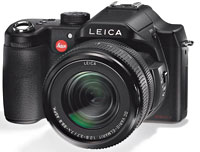 There’s been a flurry of interesting announcements from some of the photographic bigwigs leading up to the Photokina ‘World of Imaging’ Trade Show, which is held every two years at the Cologne Exhibition Centre, Germany.
There’s been a flurry of interesting announcements from some of the photographic bigwigs leading up to the Photokina ‘World of Imaging’ Trade Show, which is held every two years at the Cologne Exhibition Centre, Germany. Leica DIGILUX 3 dSLR
Leica DIGILUX 3 dSLR Leica V-LUX 1
Leica V-LUX 1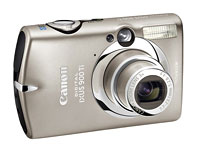 Canon PowerShot SD900
Canon PowerShot SD900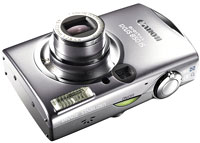 Impressively, the $449 / €449 camera offers a wideangle 3.8x zoom (28-105mm) along with the usual zillions of scene modes.
Impressively, the $449 / €449 camera offers a wideangle 3.8x zoom (28-105mm) along with the usual zillions of scene modes.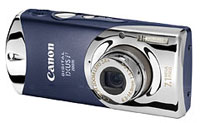
 You must all be familiar with this dreadful situation when you’re stuck in a late Friday work meeting that never seems to end, while your mates are already in the pub.
You must all be familiar with this dreadful situation when you’re stuck in a late Friday work meeting that never seems to end, while your mates are already in the pub.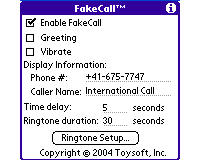 Ringtones can be set as required and when the phone rings, it’ll even display the name of the fake caller, so you can let your boss see how really urgent the call must be.
Ringtones can be set as required and when the phone rings, it’ll even display the name of the fake caller, so you can let your boss see how really urgent the call must be. Great oceans of dribbling saliva could be seen around the photography desk at Digi-Lifestyle towers today as we caught sight of the eagerly awaited Leica M8 Digital Rangefinder camera.
Great oceans of dribbling saliva could be seen around the photography desk at Digi-Lifestyle towers today as we caught sight of the eagerly awaited Leica M8 Digital Rangefinder camera.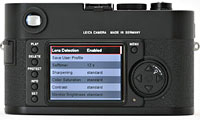 Leica used some Teutonic cunning to get around the problem of corner vignetting on older lenses by employing a smaller sensor, offset microlenses and software correction optimised for the lens in use.
Leica used some Teutonic cunning to get around the problem of corner vignetting on older lenses by employing a smaller sensor, offset microlenses and software correction optimised for the lens in use.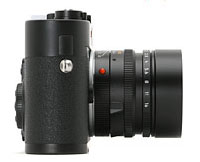 Rangies aren’t for everyone though. The lack of autofocus and limited availability of long telephoto lenses means that you’ll need an experienced hand to grab action/sports photographs, and there’s no hand-holding ‘scene’ modes on this puppy.
Rangies aren’t for everyone though. The lack of autofocus and limited availability of long telephoto lenses means that you’ll need an experienced hand to grab action/sports photographs, and there’s no hand-holding ‘scene’ modes on this puppy. Inside is the three-position shutter release button (prime exposure/ exposure lock/shutter release) with an old fashioned shutter speed dial to the left (we like these).
Inside is the three-position shutter release button (prime exposure/ exposure lock/shutter release) with an old fashioned shutter speed dial to the left (we like these). As with previous Leica designs, the camera is clear and easy to understand, simple and graceful throughout. And eye-wateringly expensive.
As with previous Leica designs, the camera is clear and easy to understand, simple and graceful throughout. And eye-wateringly expensive. YouTube is continuing to get attention for the content it has on it. Not this time for alleged copyright violations, but for a young girl who has been appearing in videos about the trial and tribulations of her life. Her moniker?
YouTube is continuing to get attention for the content it has on it. Not this time for alleged copyright violations, but for a young girl who has been appearing in videos about the trial and tribulations of her life. Her moniker?  What raised our suspicions? It had always been shot on a video camera, high above a standard Web cam and edited in a self-consciously amateur fashion. The subjects she spoke about appeared just too ideal for the majority-male YouTube – geeky with relationship questions. Of course she was also very attractive. It was also strange that the music that was used in the tracks was always fully credited. We wondered if Bree was eventually going to start talking about products.
What raised our suspicions? It had always been shot on a video camera, high above a standard Web cam and edited in a self-consciously amateur fashion. The subjects she spoke about appeared just too ideal for the majority-male YouTube – geeky with relationship questions. Of course she was also very attractive. It was also strange that the music that was used in the tracks was always fully credited. We wondered if Bree was eventually going to start talking about products. It appears that some people who it also didn’t quite ring true for,
It appears that some people who it also didn’t quite ring true for, 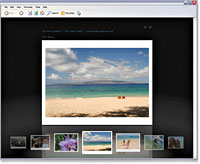 Adobe has announced the latest upgrade to their Photoshop Elements consumer photo editing software with Version 5 of the popular, consumer-friendly package adding more tools to help photographers organise, edit and share their pictures.
Adobe has announced the latest upgrade to their Photoshop Elements consumer photo editing software with Version 5 of the popular, consumer-friendly package adding more tools to help photographers organise, edit and share their pictures. Powerful imaging tools
Powerful imaging tools New tools for version 5 include a useful black-and-white conversion tool, a long overdue “Adjust Colour Curves” tool for fine-tuning images and a handy controls for correcting camera lens distortion.
New tools for version 5 include a useful black-and-white conversion tool, a long overdue “Adjust Colour Curves” tool for fine-tuning images and a handy controls for correcting camera lens distortion. Premiere Elements 3.0
Premiere Elements 3.0 Apple has for once pre-announced a new product, codenamed iTV (which is unlikely to be the final name as they’d get sued in the UK for a start).
Apple has for once pre-announced a new product, codenamed iTV (which is unlikely to be the final name as they’d get sued in the UK for a start). In the UK, the iTunes music store was closed all day yesterday for refurbishment, with a black screen just saying ‘Showtime.’ At about 6pm (UK time) Steve Jobs announced why. There’s a slew of new/updated iPods and more content on the store as well as version 7 of iTunes for Mac and Windows (more on this later).
In the UK, the iTunes music store was closed all day yesterday for refurbishment, with a black screen just saying ‘Showtime.’ At about 6pm (UK time) Steve Jobs announced why. There’s a slew of new/updated iPods and more content on the store as well as version 7 of iTunes for Mac and Windows (more on this later). Movies (and video from the iTunes store) are now stored in 640 x 480 format.
Movies (and video from the iTunes store) are now stored in 640 x 480 format. Both the Nano and iPod video now have search features so that albums can be searched for etc., using the click wheel (with on-screen letters and search criteria). Gapless playback is a new feature, so songs can be played continuously without the normal two second wait between songs. There’s no beat matching yet, but maybe that’s Apple’s next enhancement so DJ’s will be out of a job.
Both the Nano and iPod video now have search features so that albums can be searched for etc., using the click wheel (with on-screen letters and search criteria). Gapless playback is a new feature, so songs can be played continuously without the normal two second wait between songs. There’s no beat matching yet, but maybe that’s Apple’s next enhancement so DJ’s will be out of a job.